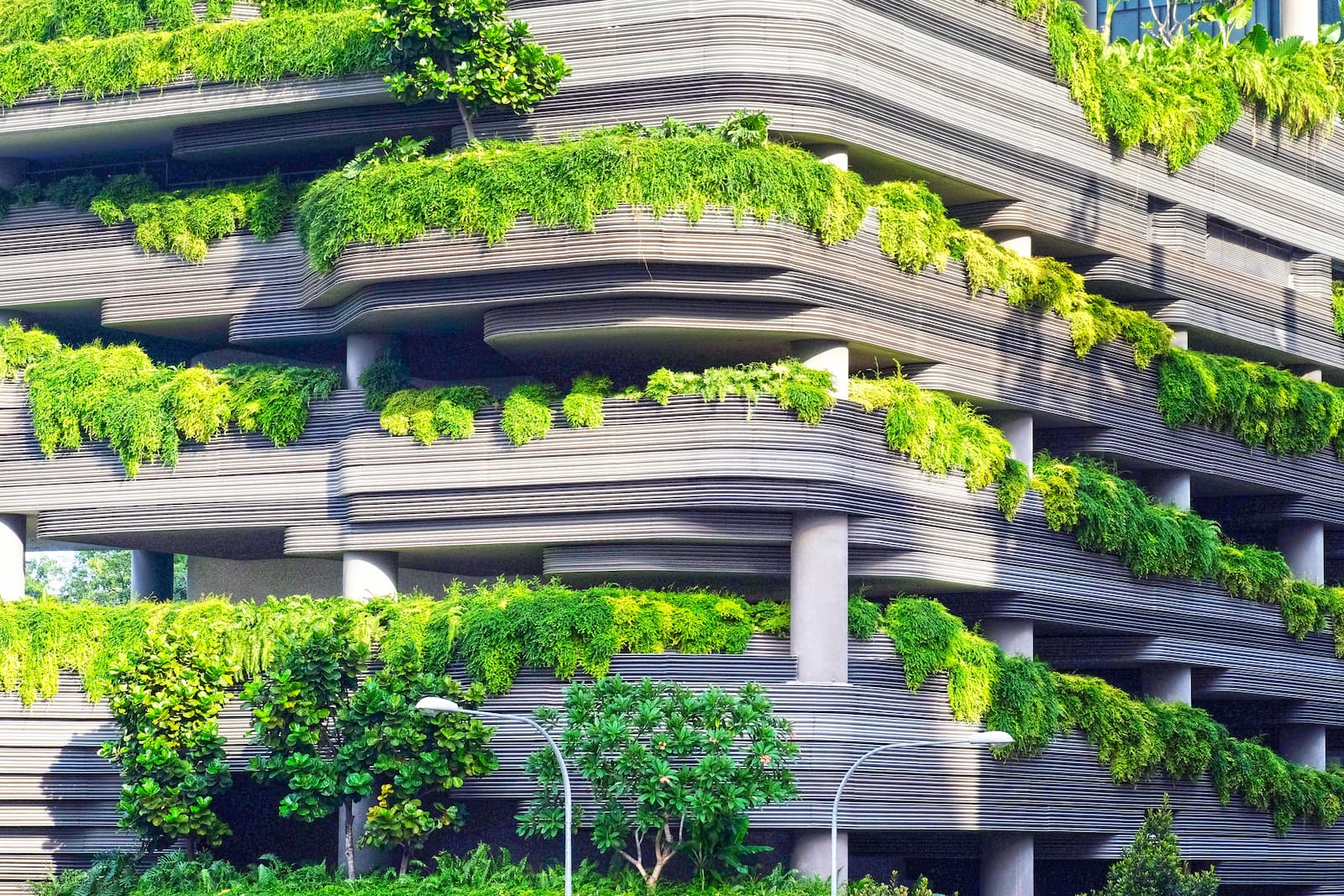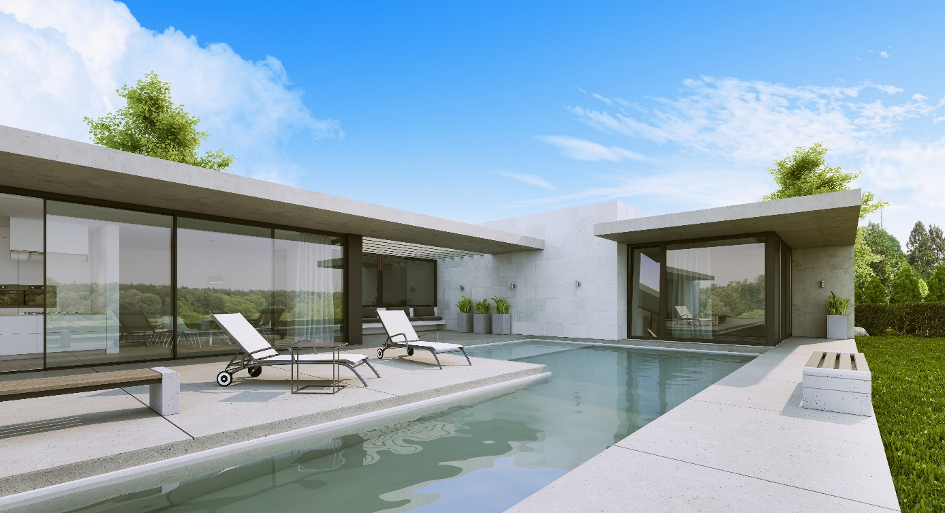The three most important principles of eco-design
Pro-ecological trends
Energy-efficient, passive, and even completely energy-neutral residential buildings are not only fashionable but a necessity in the current climate crisis. Rising energy prices, as well as a lack of effective government regulations and monitoring of the market and sensible investments improving the country’s energy balance, leave consumers unprotected.
The increase in energy prices in Romania by 25% and gas prices by 20%, which could be observed between July 2020 and 2021i is probably not the end of price increases. Pro-ecological construction is, therefore, not only a tribute to nature but, above all, a way to live comfortably, healthy and cheaply.

1. Reduction in demand for external energy
The less energy the user must supply to the building from the outside, the lower the maintenance fees for them, and also the better the building’s impact on the climate.
Use of the terrain topography and the existing infrastructure
Eco-design begins at the level of choosing a plot of land or adjusting the design to its natural conditions. Sustainable construction uses what nature has given – for example, a slope allows trenching of the north wall into the ground, which will additionally protect the building against heat loss.
Sustainable design takes into account fitting the real estate into the existing infrastructure in the best possible manner so as not to cause the spreading of the cities to the suburbs (Urban Sprawl), which generates a number of social, economic and environmental costs.
Use of renewable energy sources
Heat pumps and photovoltaics are the two most important solutions applied in residential buildings. As many as 210 sunny days a year in Romania allow obtaining high rates of PV installation efficiency.
Techniques allowing energy accumulation
When designing a building aimed at climate neutrality, it is important to use each method that allows energy savings.
These methods include:
- Covering south walls with a darker colour,
- Management of the vegetation of the building’s surroundings,
- Management of the air humidity.
2. Preventing energy losses
The second most important principle of constructing fully eco-friendly houses is to ensure building insulation, which will allow the lowest possible energy losses and the creation of an almost closed circuit.
Recuperation
Mechanical ventilation with heat recovery is another element to keep in mind when designing an eco-friendly house. This aspect is all the more important as the problem of air pollution in Romania is particularly acute. In the country where the concentration of suspended particulate matter is one of the highest in Europe, comparable to Poland and Bulgaria, taking care of the inhaled air quality is extremely important. It is estimated that 27 thousand people die each year due to air pollutionii. Recuperation means not only lower energy consumption but, above all, a better quality of life.
Appropriate arrangement of rooms
Garage, boiler room, utility rooms, bathroom – these rooms should be designed on the north side. Placing the kitchen on the north or north-east side is also a common solution. Due to the fact that this room generates a lot of heat, it is also a heat buffer and allows energy micro-savings related to food storage (the room gets warmer to a lesser extent, which extends the storage time of vegetables and fruit kept outside the refrigerator).
Glazing on the south wall
Glazing allows additional lighting and heating of rooms. In the past, it was believed that large glazing was a loss of heat. Today’s systems, such as the latest MB-79N window and door system from Aluprof, allow obtaining the heat transfer coefficient, i.e. the U-value, from 0.64 W/(m2K). If we add high sound insulation (46 dB) and a high rainwater-proof class (E 4500), we will obtain perfectly thermally insulated windows and doors.

MB-79N window and door system with thermal insulation
Sunbreakers – management of sun exposure during the summer months
The location of the building in a way allowing it to accumulate as much heat as possible is a great advantage during the winter months, but in the summer, it may lead to excessive heating of rooms, and thus the necessity to consume energy for cooling them.
When designing eco-friendly buildings, we must remember about designing such solutions due to which the building, during the months of intense sunlight, will get warmer to a lesser extent. There are several solutions, and the choice of the optimal one depends on how the building will be used. In rooms where residents stay during the day, and it is important to ensure eye comfort, external blinds or solar screen shades are perfect. Aluprof has three such systems in its offer: SkyRoll Zip, SkyRoll Classic and SkyRoll Eco.

SK, SKO and SKP adaptive system roller shutters
Properly designed tree stand
Uncovering the south façade so that the accumulation of energy can occur and simultaneously covering the building with trees on the north side, which is most exposed to cold winds, and dries for the longest period after rain, constitute the most energy-saving solution.
When designing the tree stand, it is also necessary to take into account the fact that climate changes have resulted in a more frequent occurrence of extreme winds and storms. The trees planted protect the building, but they can also pose a threat to it.
3. Building materials that can be recycled
In the case of demolition or modernisation of a house, there is always the problem of construction waste that must be disposed of. For the developer, it means an additional problem and costs; therefore, as early as the stage of choosing materials, it is necessary to pay attention to the extent to which recycling is possible.
– A perfect example is aluminium, which can be recycled almost without loss. Aluminium can be processed endlessly. It does not deteriorate during processing, and its recycling requires only 5% of the energy needed to produce primary aluminium – explains Hubert Nuckowski from Aluprof.
Novelties in the area of materials or solutions dedicated to sustainable construction will continue to appear on the market. What is most important, however, is that matching them together should ensure the fulfilment of each of the three principles of eco-design.
